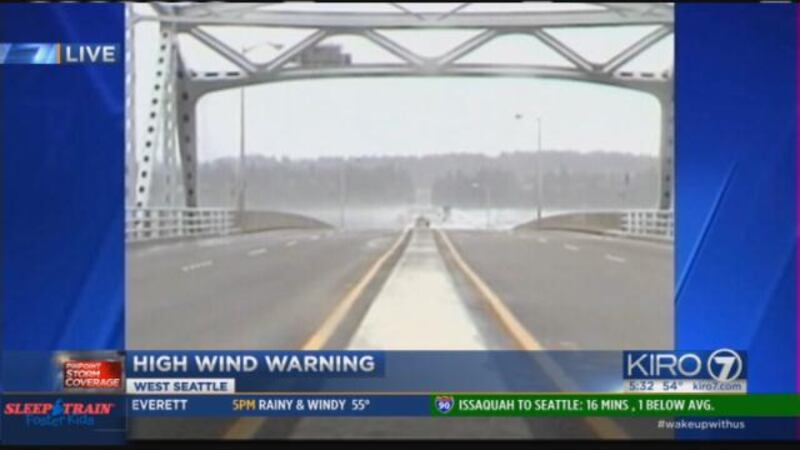SHORELINE, Wash. — On Monday, WSDOT revealed a decidedly low-tech way engineers and maintenance crews decide to close the SR 520 floating bridge during violent windstorms.
They listen to it.
“These crews work on the bridge every day,” said WSDOT administrator Dave McCormick. “They can hear creaks and groans, unusual sounds in the bridge that they know are going to be a warning in high winds."
McCormick says wind speeds are measured on the bridge, and the official rule WSDOT typically abides by is to close it to traffic if they measure 50 mph sustained winds for 15 minutes. (A warning siren goes off if 40 mph sustained winds are reached for one minute.)
At the WSDOT nerve center in Shoreline, crews are prepping for a severe windstorm to hammer the region Tuesday.
Cameras will monitor hazards like trees falling on roadways, but the SR 520 floating bridge has its own dedicated crew reacting to strong winds.
“At 30-35 miles an hour, we're pre-deploying staff out to the bridge and so we go on 'bridge watch' there at that point," McCormick said.
In sustained 40 mph winds, WSDOT will typically shut down the bridge to traffic and open the span to relieve tremendous wave pressure hitting the sides.
“The spray from the waves can hit cars driving over,” McCormick said. “That’s not a good situation.”
Want to talk about the news of the day? Watch free streaming video on the KIRO 7 mobile app and iPad app, and join us here on Facebook.
KIRO








